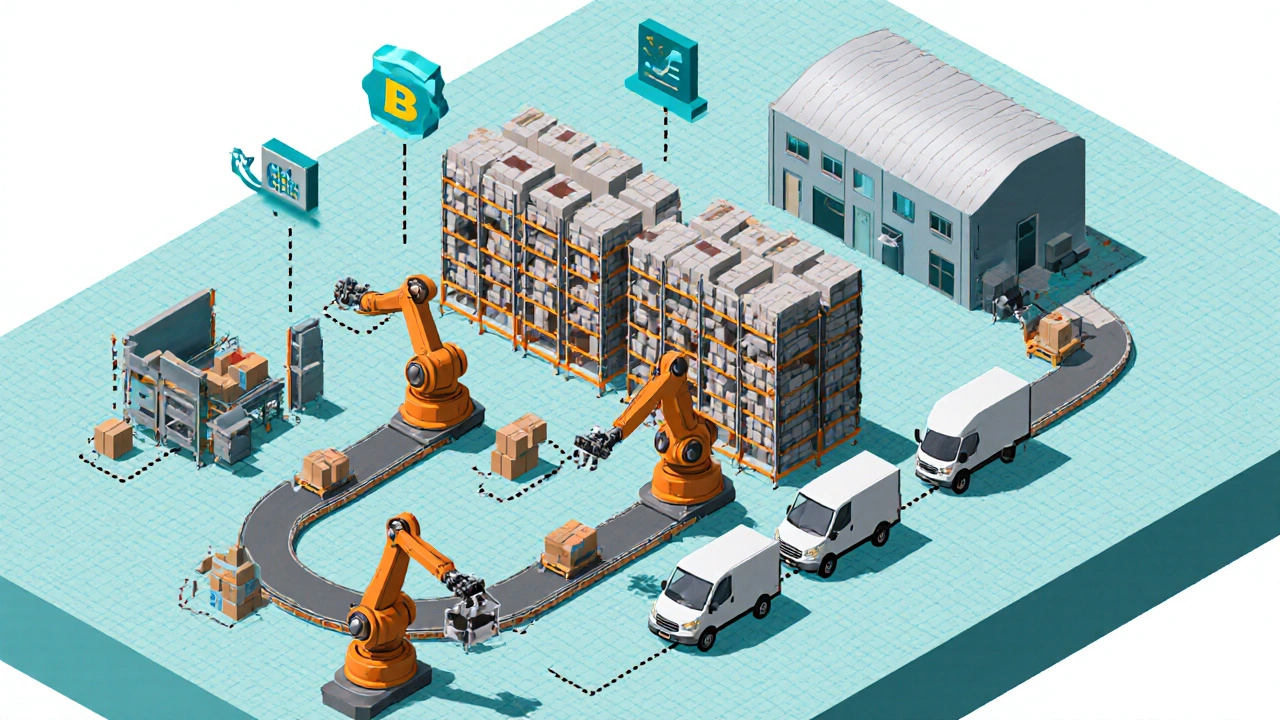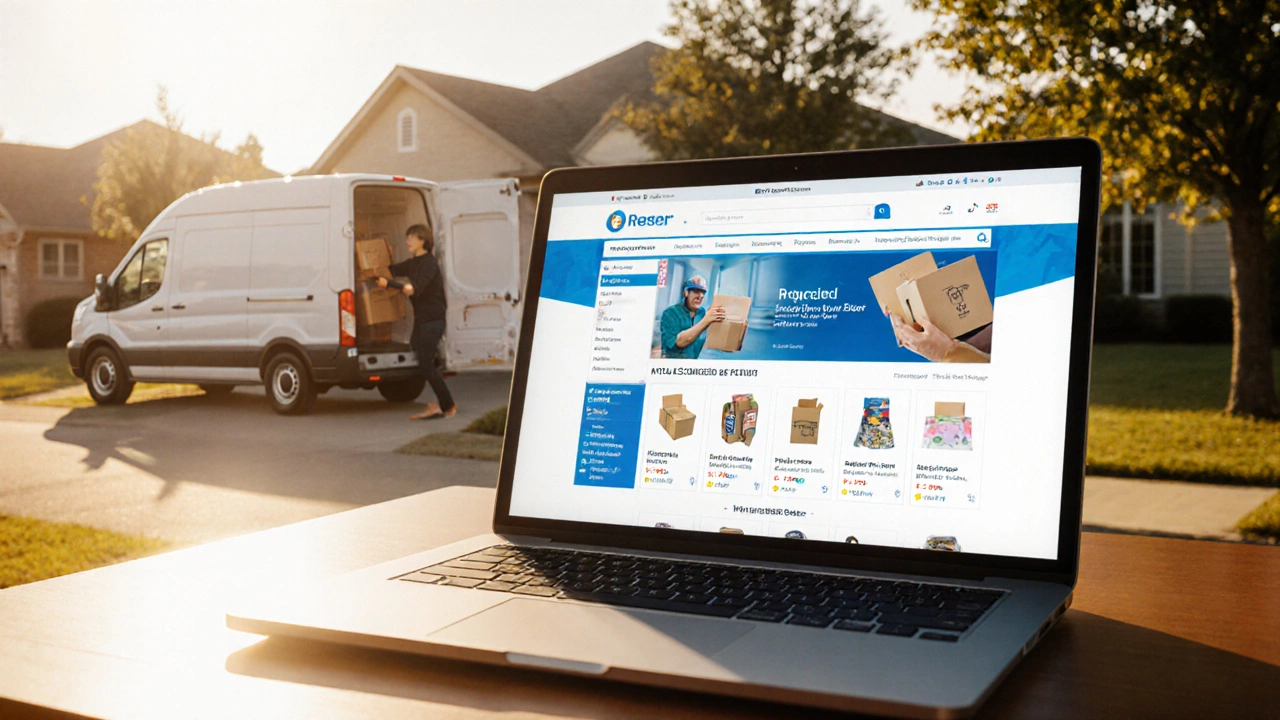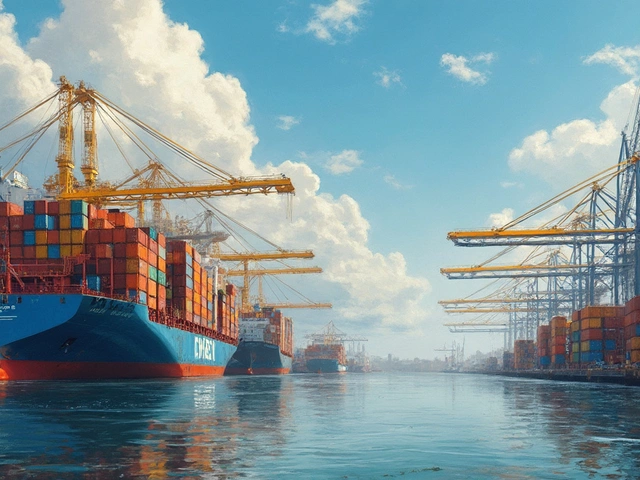E-commerce Logistics Cost Calculator
Business Input Parameters
Profitability Analysis
Key Cost Breakdown
Recommendation
Quick Takeaways
- e‑commerce benefits include wider reach, 24/7 sales and lower overhead.
- Logistics networks must adapt to faster, smaller shipments.
- Last‑mile delivery and reverse logistics are the biggest cost drivers.
- Warehouse automation and drop‑shipping can offset many challenges.
- Success depends on balancing speed, cost, and customer experience.
When you hear the term e‑commerce is a digital buying and selling model that enables businesses and consumers to exchange goods or services over the internet, the first image that comes to mind is often a sleek website and a fast‑moving delivery truck. But is that picture the whole story? This article peels back the hype to answer whether e‑commerce is genuinely a good thing, weighing the upside against the logistical hurdles that keep the whole system humming.
What exactly is e‑commerce?
At its core, e‑commerce means any commercial transaction conducted online. From a single‑person Etsy shop to multinational platforms like Amazon, the model shares three common traits: a digital storefront, electronic payment processing, and a fulfillment system that moves product from seller to buyer.
How e‑commerce reshapes logistics
The rise of online shopping has forced traditional logistics the planning, execution, and control of goods movement and storage to become far more agile. Instead of a few large shipments to stocked retail locations, businesses now ship dozens of tiny parcels directly to consumers. This shift drives three major changes:
- Last‑mile delivery - the final stretch from a local hub to a doorstep, now often under an hour in urban areas.
- Reverse logistics - handling returns, exchanges, and refurbishments, which can consume up to 30% of total e‑commerce costs.
- Warehouse management - using automation, real‑time inventory tracking, and multi‑location fulfillment to keep stock close to customers.

Top benefits of e‑commerce
Below are the most compelling reasons businesses jump online:
- Market reach: A website can attract customers from any country, breaking geographic limits.
- Lower fixed costs: No need for prime‑location storefronts, which cuts rent and utilities.
- Data‑driven decisions: Real‑time analytics reveal buying patterns, enabling personalized marketing.
- Scalable operations: Cloud‑based platforms let you add product lines without massive capital investment.
- 24/7 availability: Sales never sleep, which translates directly into higher annual revenue.
Common challenges and hidden costs
Every upside has a flip side. The biggest pain points for e‑commerce operators include:
| Aspect | Pros | Cons |
|---|---|---|
| Customer acquisition | Global reach, SEO, social ads | High digital ad spend, fierce competition |
| Inventory | Just‑in‑time stocking, drop‑shipping | Risk of stockouts, complex forecasting |
| Delivery | Fast shipping options, same‑day in metros | Last‑mile cost spikes, carrier capacity limits |
| Returns | Easy customer service, brand loyalty | Reverse logistics adds 15‑30% to order cost |
| Technology | Automation, AI‑driven recommendations | Initial platform setup and integration expenses |
The table makes it clear: while revenue potential rises, the expense side can erase margins if logistics aren’t optimized.
The supply‑chain ripple effect
Modern e‑commerce relies on a network of specialized services:
- Fulfilment centre a warehouse that stores, picks, packs and ships products for online retailers - often located near major urban hubs to reduce delivery distance.
- Drop shipping a model where the retailer forwards orders directly to a supplier who ships the product to the buyer - eliminates inventory holding but hands over control of shipping quality.
- International shipping the movement of parcels across borders, subject to customs, duties, and varying carrier regulations - opens new markets but adds complexity.
- Payment gateway a service that authorizes credit card, digital wallet, and alternative payments for online transactions - crucial for trust and conversion.
- Online marketplace a platform where multiple sellers list products under a single brand, e.g., Amazon, eBay - provides traffic but charges fees.
Each piece adds value, yet each also introduces a new point where delays, errors, or extra fees can appear. Coordinating them smoothly is the real test of e‑commerce logistics.

Real‑world example: a regional retailer’s pivot
Mid‑size apparel brand "Threaded Co" operated three brick‑and‑mortar stores in the Midwest. In 2022 they launched an online shop, partnered with a courier service a company that provides parcel pickup and delivery to end‑customers, and set up a small fulfilment centre in a nearby industrial park.
Within 12 months they saw a 45% revenue lift, but their profit margin shrank from 28% to 22% because:
- Last‑mile delivery costs rose 18% during peak holiday weeks.
- Return handling added a 12% surcharge on each order.
- Inventory forecasting errors forced a 7% discount on overstocks.
To fix the gap, Threaded Co invested in warehouse automation (robots for picking) and switched 30% of its SKUs to a drop‑shipping model. By Q4 2024 the margin recovered to 26% while maintaining the same sales volume.
Decision checklist: Is e‑commerce right for you?
- Customer demand: Do your target buyers prefer buying online? Survey data and search trends can answer this.
- Product suitability: Low‑weight, non‑perishable items ship cheaper and see fewer returns.
- Logistics capability: Can you partner with reliable carriers for last‑mile delivery or build your own network?
- Technology readiness: Do you have an e‑commerce platform, payment gateway, and inventory system that talk to each other?
- Cost tolerance: Are you prepared for the extra expense of reverse logistics and potential carrier surcharges?
If you answer “yes” to most items, the odds are in favor of going digital. If several answers are “no,” you might start with a hybrid model-keep a physical presence while testing a limited online catalog.
Future outlook: where e‑commerce logistics is headed
Three trends will decide whether e‑commerce stays a net positive:
- Micro‑fulfilment: Tiny warehouses inside city blocks shorten the last mile to under 30 minutes.
- AI‑driven routing: Real‑time algorithms match orders to the optimal carrier, cutting cost by up to 12%.
- Sustainable packaging: Green‑focused shoppers reward brands that use recyclable boxes, influencing carrier selection.
Adopting these innovations can turn today’s challenges into tomorrow’s competitive edges.
Is e‑commerce always cheaper than a physical store?
Not necessarily. While rent and utilities drop, you gain shipping, payment processing, and return costs. The overall margin depends on product type, order volume, and logistics efficiency.
How does reverse logistics affect profitability?
Returns can add 15‑30% to the original order cost. Streamlining inspection, refurbishing, and resale processes is essential to keep the hit on profit low.
Can small businesses compete with giants like Amazon?
Yes, if they focus on niche products, fast personalised service, and leverage local micro‑fulfilment to beat the big players on speed and relevance.
What role does automation play in e‑commerce logistics?
Automation speeds up picking, reduces errors, and enables real‑time inventory updates, which together lower labor costs and improve order accuracy.
Is international shipping worth the effort?
It opens new markets, but you must factor customs duties, longer delivery times, and higher carrier rates into your pricing model.





